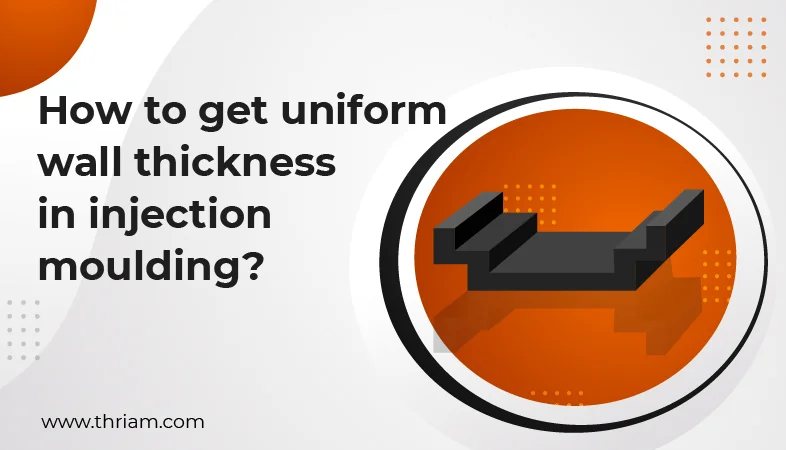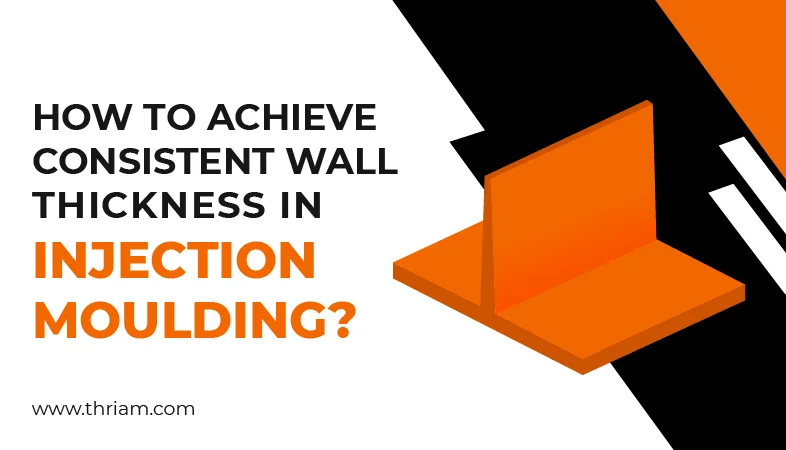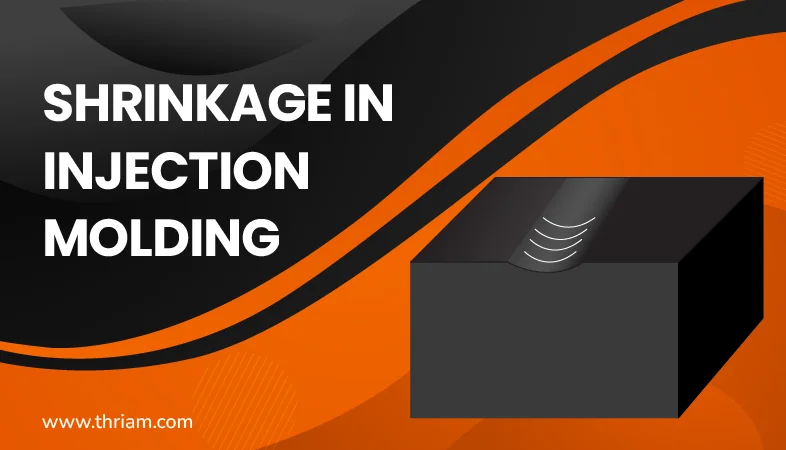Mastering wall thickness in injection moulding: Causes and Prevention

Introduction
Injection moulding is a widely used manufacturing process that involves injecting molten material into a mould cavity to produce a final product. One of the critical aspects of successful injection moulding is achieving uniform wall thickness. Uniform wall thickness ensures the structural integrity and consistent performance of the product. In this blog, we will explore the importance of uniform wall thickness in injection moulding and discuss various techniques to achieve it.
Understanding Wall Thickness
Wall thickness refers to the distance between two parallel surfaces of a moulded part. It plays a crucial role in determining the strength and aesthetics of the final product. In injection moulding, maintaining consistent wall thickness is essential to prevent issues such as warpage, sink marks, and dimensional variations.
Several factors influence wall thickness, including design considerations, mould design, and material properties. Understanding these factors is crucial for achieving uniform wall thickness in injection moulding.
Reasons for Achieving Uniform Wall Thickness
There are several benefits of achieving uniform wall thickness in injection moulding. Firstly, it ensures structural integrity, preventing potential defects such as warpage, distortion, and dimensional inconsistencies. Uniform wall thickness also improves the flow of molten material during injection, reducing the risk of short shots. Additionally, uniform thickness allows for better control over cooling and cycle times, resulting in improved productivity and cost-efficiency.
On the other hand, non-uniform wall thickness can lead to several problems. It can cause variations in the cooling rate, resulting in differential shrinkage and warpage. It may also lead to sink marks, where depressions or indentations are formed on the surface of the product. Delamination, a condition where layers separate, is another potential issue caused by uneven wall thickness.
Techniques for Achieving Uniform Wall Thickness
Achieving uniform wall thickness requires careful consideration during the design, mould fabrication, and material selection stages. Here are some techniques to ensure uniform wall thickness in injection moulding:
Product Design Considerations
Designing the product with uniform wall thickness is crucial. Consider the following factors:
- Symmetry: Symmetrical designs help maintain uniform flow of material within the mould cavity.
- Draft angles: Incorporating proper draft angles in the design allows for easy ejection of the product from the mould, reducing the risk of wall thickness variations.
- Ribs and gussets: Ribbing the product can provide additional support and maintain structural integrity while ensuring a uniform wall thickness.
Mold Design Considerations
The mould design also plays a crucial role in achieving uniform wall thickness. Consider the following:
- Cooling system: Proper cooling channels should be designed to ensure uniform cooling throughout the mould, preventing differential shrinkage and warpage.
- Gate placement: Proper gate placement helps in achieving uniform material flow into the mould, reducing the risk of short shots and variations in wall thickness.
- Venting: Adequate venting is necessary to allow trapped air to escape during the injection process, preventing gas-related defects and ensuring uniform filling of the mould cavity.
Material Considerations
Choosing the right material and understanding its properties is essential for achieving uniform wall thickness. Consider the following:
- Material selection: Select materials with good flow properties and consistent viscosity to ensure uniform filling of the mould cavity.
- Melt flow index (MFI): MFI indicates the melt flowability of a material. Choosing a material with an appropriate MFI for the specific product can help achieve uniform wall thickness.
- Injection speed and pressure settings: Optimal injection speed and pressure settings can influence the flow behavior of the material and ensure uniform filling of the mould cavity.
Troubleshooting Non-Uniform Wall Thickness Issues
Even with careful consideration, non-uniform wall thickness issues may occur. Here are some common defects and their possible causes:

- Sink marks: These are depressions or indentations on the surface of the product caused by uneven cooling. Possible causes include thick sections, inadequate cooling, or inadequate packing pressure.
- Warpage: Warpage is deformation or bending of the product after ejection from the mould. Non-uniform wall thickness, improper cooling, or inadequate holding pressure can contribute to warpage.
- Delamination: Delamination occurs when layers of material separate due to non-uniform cooling, improper material flow, or inadequate packing pressure.
- Short shots: Short shots refer to an incomplete filling of the mould cavity. Causes may include inadequate material flow, insufficient injection pressure, or improper gate design.
Identifying the root causes of these defects and implementing corrective measures is crucial to achieve uniform wall thickness.
Conclusion
Uniform wall thickness is a critical aspect of injection moulding that directly impacts the quality, performance, and aesthetics of the final product. By considering design, mould fabrication, and material factors, manufacturers can achieve uniform wall thickness and avoid common defects. Through careful evaluation of specific project requirements and implementation of appropriate techniques, manufacturers can achieve consistently high-quality results in injection moulding.
Bonus content
Type of thermoplastic materials that can present difficulties in achieving uniform wall thickness:
- High viscosity materials: Thermoplastics with high viscosity are more challenging to flow evenly and maintain uniform wall thickness. Examples include polymethyl methacrylate (PMMA) and high-impact polystyrene (HIPS).
- Filled or reinforced materials: Thermoplastics that are filled or reinforced with additives such as glass fibers, carbon fibers, or minerals can present challenges in achieving uniform wall thickness. The presence of these additives can affect the flow behavior and cause variations in wall thickness. Examples include glass-filled nylon (GF Nylon) and carbon fiber-reinforced polymers (CFRP).
- High melt temperature materials: Thermoplastics with high melt temperatures require higher injection pressures and temperatures, making it more difficult to achieve consistent flow and uniform wall thickness. Examples include polyetherimide (PEI) and polyetheretherketone (PEEK).
- Thermoplastics with narrow temperature processing windows: Some thermoplastics have narrow temperature processing windows, meaning they require precise control of temperature and cooling. Any deviations in temperature control can lead to variations in flow and wall thickness. Examples include polycarbonate (PC) and polyethylene terephthalate (PET).
- Heat-sensitive materials: Thermoplastics that are sensitive to heat can pose challenges in achieving uniform wall thickness. Heat-sensitive materials require careful control of melt temperature and cooling to prevent variations in flow and wall thickness. Examples include polylactic acid (PLA) and polyvinyl chloride (PVC).



